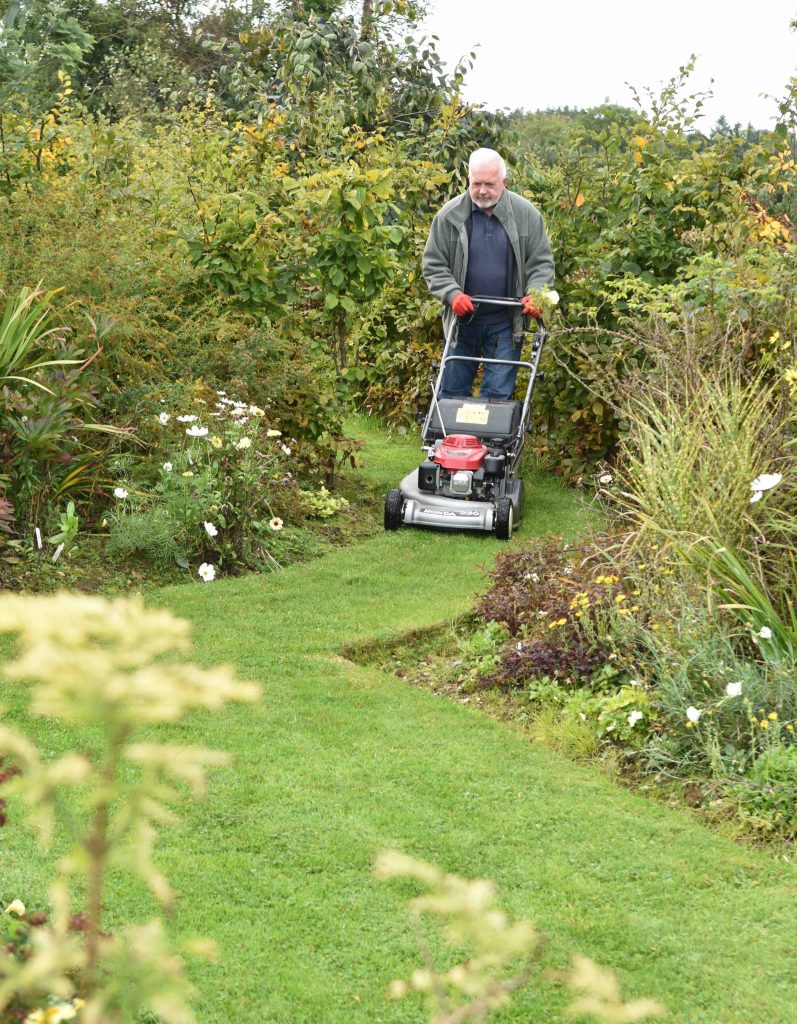
The hot, dry summer was a challenge for gardeners and gardens and one of the saddest sights was our brown lawns. We tend to panic unnecessarily about the turf and, unless you need to care for a bowling green, we can allow the grass to take its chances. It will green up in autumn when rain returns.
Unfortunately, because a thick, lush sward helps to keep down weeds and moss, both these problems can become worse if lawns get threadbare in summer. Neither is a huge problem if you just want a ‘green carpet’ but may offend those who are dedicated to their lawn. My own grass, which was a field four years ago, is full of clover and some other weeds but I am not too bothered. It would take more time than I have available and a lot of chemicals to eradicate the weeds. The biggest problem with the clover is having to keep stopping when I mow in summer so I don’t harm the bees!
Even so, there are some jobs that can be done now to help your lawn. Mowing is tricky. We need to keep the lawn cut for several reasons. If there are bulbs planted in the lawn it won’t be cut for almost six months so we need to keep it short now. But the days when it is dry enough are few. Raise the height of cut and mow when you can until it stops growing.
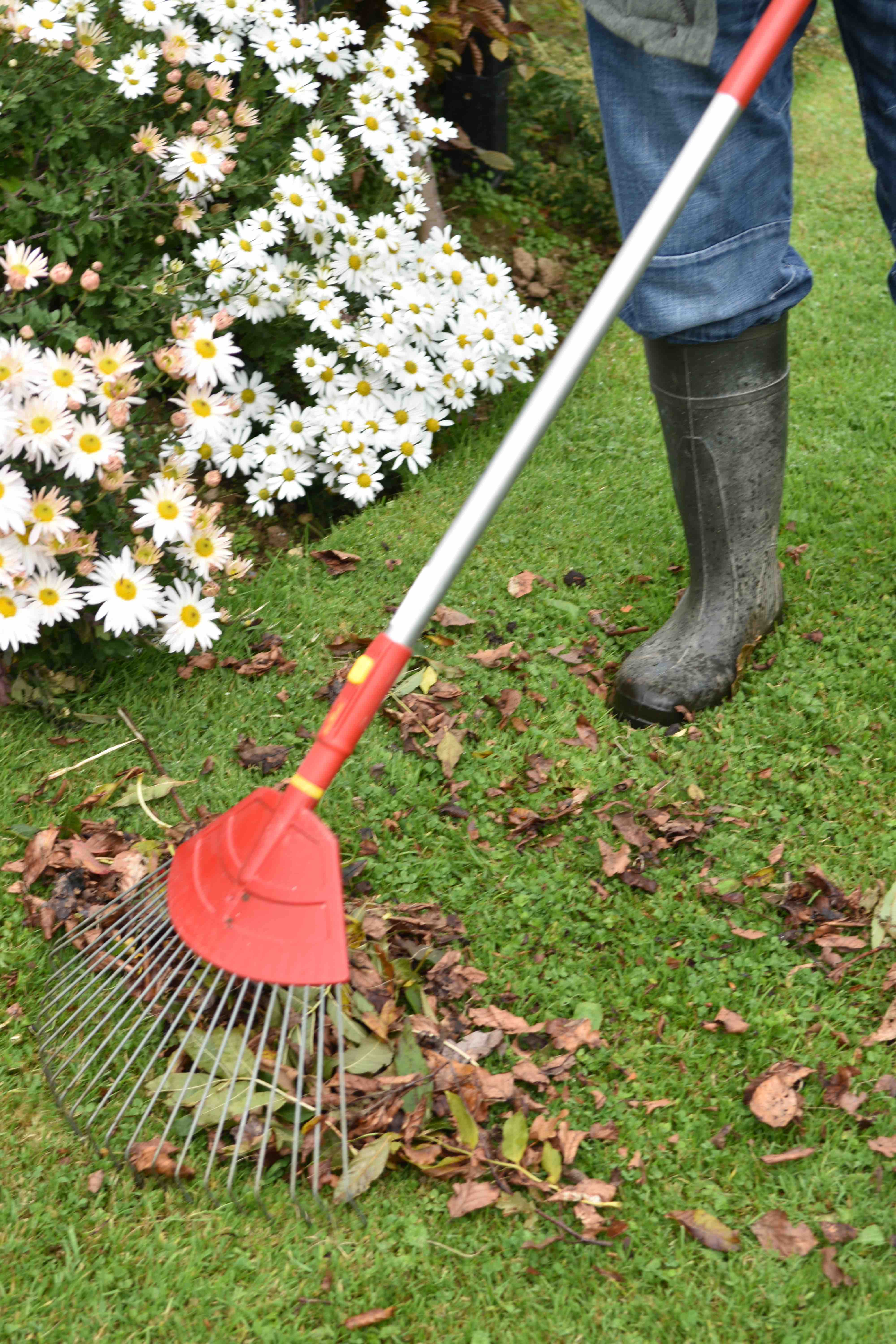
Leaves are wonderful things when they fall from the trees. They protect the soil from winter rain and make wonderful leaf mould. But they are not welcome on a lawn. If left, they will encourage worms, which are not beneficial on lawns. Worms bring soil to the surface, forming seed beds for weeds and making the lawn slippy in winter. If left on the lawn fallen leaves will also smother the grass and kill it. So regular leaf collecting is necessary. If the weather is dry you can pick up lots when mowing, otherwise you will need to rake them off. Don’t even think of burning them! They will make wonderful leaf mould for your garden. If you have room you can stack them in compost heaps or you can press them into bin bags, making holes in the sides with a fork and leaving them for a year.
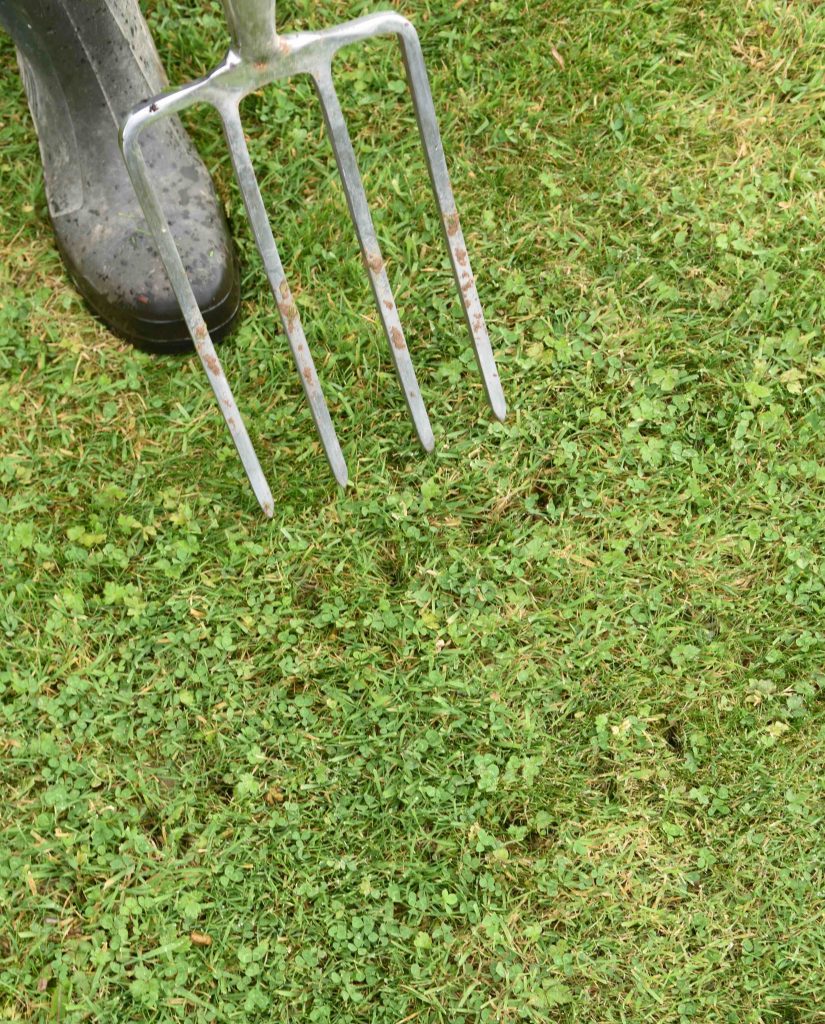
If the soil is compacted or heavy clay, aerate it with a garden fork. Push it in as far as possible and wiggle it back and forward. You don’t have to do it all at once and it is a good job to do for ten minutes or so whenever you feel up to it. It will encourage good grass growth and will prevent soggy patches in winter that may lead to moss.
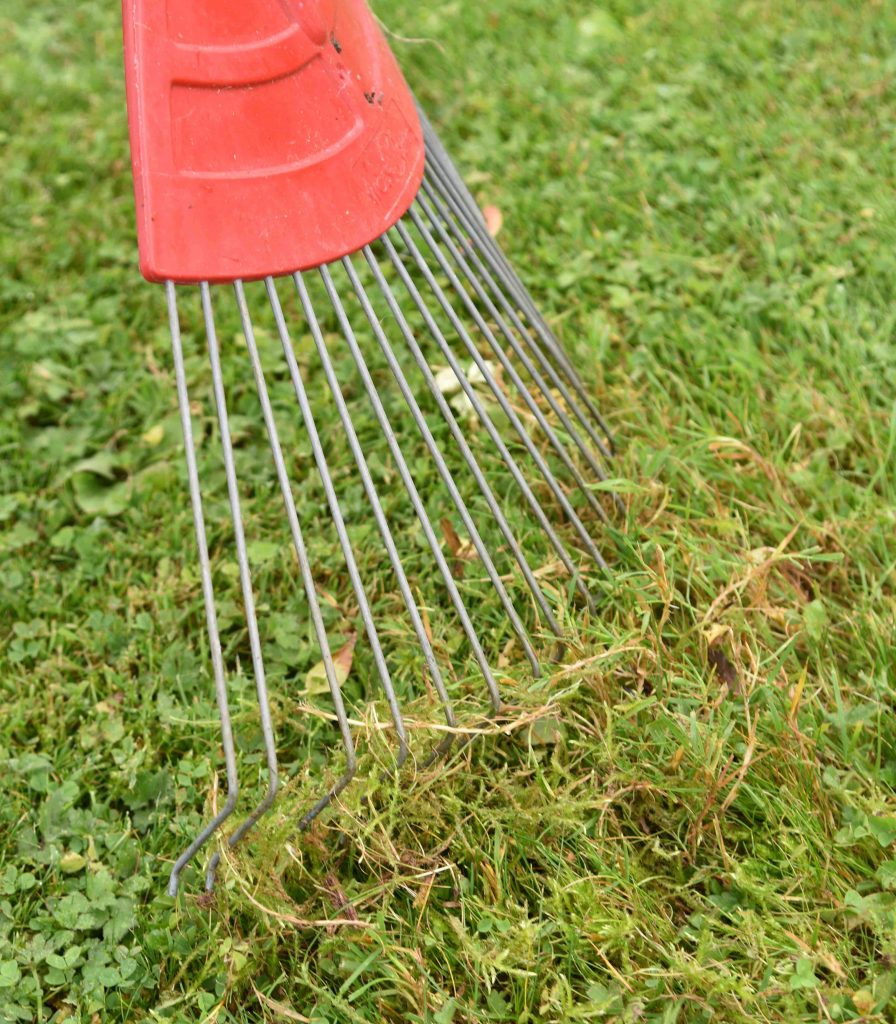
Moss grows in shady spots, wet areas and where the lawn died off in summer. It is a tricky problem to solve because, even if you kill it and rake it out, if the conditions are better for moss than for grass, the moss will come back. But regular raking will help get rid of it and also encourage good grass. You can apply lawn sand at this time of year but feeding is not a good idea. Don’t go too mad and scarify the grass too much – that is better left till spring.
If you rake out moss and the grass is very thin you can sow new seed or a patch pack but it is getting a bit late in the year and it is better to wait till spring.
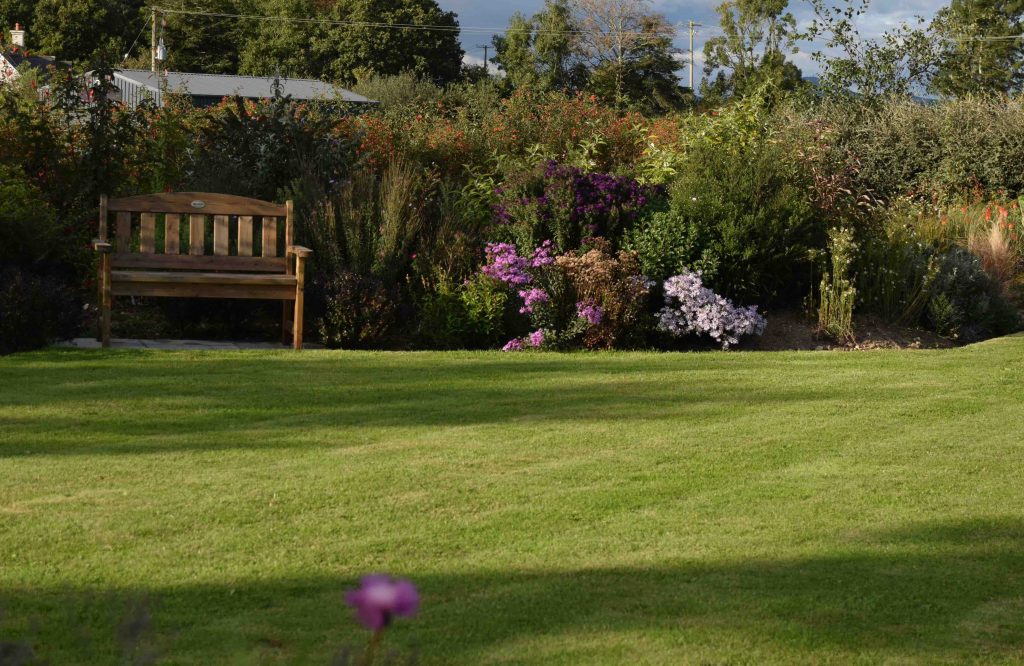
Weekly reminders
Lift tender plants – We have been lucky with frosts and the weather is currently mild but cannas, gladioli and dahlias should be lifted soon.
The mild weather is perfect for plating so refurbish those patio pots, continue planting spring bulbs and plant trees and shrubs
Plant garlic in well-drained soil in full sun
Stake Brussels sprouts, kale and broccoli if plants have started to lean after the recent wind and rain